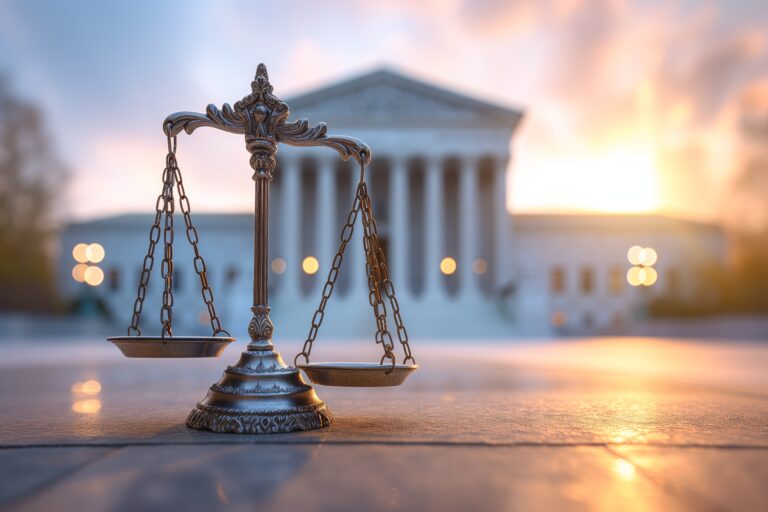
Are College Athletes Employees: The Supreme Court is Increasingly Likely to Resolve the Question
On July 11th the Third Circuit, covering Pennsylvania, New Jersey, Delaware, and the Virgin Islands, issued a decision that may signal and eventually put an end to the NCAA’s myth of amateurism.
The case, Johnson v. NCAA, was on a preliminary posture but signaled a growing circuit split between neighboring circuits on whether college athletes should be considered employees. A circuit split is when two intermediate federal courts, (the geographically defined courts, called “Circuit Courts of Appeal,” that are immediately below the U.S. Supreme Court) disagree on a legal question. The existence of a circuit split is one of the factors explicitly considered by the Supreme Court Rules for determining whether to take a case.
The existence of a circuit split has greater weight before the Supreme Court when the two circuits are adjacent to each other, as is the case in Johnson v. NCAA. Judge L. Felipe Restrepo of the Third Circuit wrote the opinion, which considered a challenge under the Fair Labor Standards Act (FLSA) and state wage laws to the denial of wages to student-athletes at various colleges. The applicability of those wage laws depends entirely on whether or not student-athletes are considered employees and colleges their employer. The applicable law from the New Deal era defines an employee as any individual who works for an employer, which, as noted in the opinion, is logically circular. Different circuit courts have developed different methods for testing whether an individual is an employee. According to Judge Restrepo, the proper inquiry is into “the economic realities of the relationship” between the college athletes and their schools, and a college athlete is an employee when they (1) perform services for colleges, (2) necessarily and primarily for the college’s benefit, (3) under the college’s control or right of control, and (4) in return for express, implied or in-kind benefits. Even a casual consumer of college athletics would recognize that under that rubric Division One college athletes of major sports would probably be employees of their universities.
It seems less clear whether the same will be true at more minor colleges in a lower division or even in less popular sports at Division One schools. At smaller schools the schools derive less value and benefit from running athletics programs, changing, at least as a matter of degree, the economic calculus of the relationship.
But the legal holding is just one small part of the opinion because there are pages and pages of it dedicated to the ridicule of the NCAA and its historic stance on amateurism. Judge Restrepo explicitly refused to use the term “student-athlete” as it obfuscates “the nature of the legal relationship at the heart of a growing commercial enterprise.” The opinion painstakingly details the business successes of college sports, heavily implying that the economic relationship between schools and college athletics is significantly more similar to economic activity than it is educational activity.
For now, this decision openly contradicts a decision from the Seventh Circuit (containing Indiana, Illinois, and Wisconsin) from 2016 which held that as a matter of law, student-athletes are not employees under the FLSA. The decision also refuses to apply the popular Glatt test from the Second Circuit, (containing New York, Connecticut, Vermont, and Puerto Rico) creating another split that would counsel the Supreme Court to formally decide whether college athletes are employees. The Third Circuit disagreeing with two sister circuits would generally be a strong indicator that the Supreme Court would take up the issue.
In the interim, schools across America, and especially in the Third Circuit, are caught between a rock and a hard place. The NCAA will not allow them to pay college athletes or risk sanctions, but if they continue not paying athletes, they may face even larger liabilities related to the hours that college athletes spend at practice and traveling for games each week.
Counting votes on the Supreme Court, it seems likely that there are enough justices to vote to hear the case. The three Democratic appointees are generally pro-employee and Justice Kavanaugh has publicly signaled his interest in the issue in NCAA v. Alston. If Justice Kavanaugh thinks that he can convince another Republican-appointed Justice to side with athletes against the NCAA he would likely cast the deciding vote to hear the case to determine once and for all whether college athletes are employed by their employer.
The Johnson case may be the vessel that the Supreme Court eventually uses to decide that question. The Third Circuit’s decision is on a preliminary posture and the case was remanded back to the trial court level. In two years, the case may be tee-ed up like a fastball over the middle of the plate for Justice Kavanaugh to take a swing at.
The knock-on effects of this particular ruling will be small, but the ground beneath college athletics’ feet is shifting. A Supreme Court case is likely only a couple of years away. In the interim, only the most astute high school recruits or college athletes will realize that selecting Penn State over Indiana might determine whether they receive wages – making it not just a circuit split but a Big Ten Conference split. The case likely marks the next step toward the end of ‘amateurism’ in college sports.
Author: David Freckleton
Kendall PC



